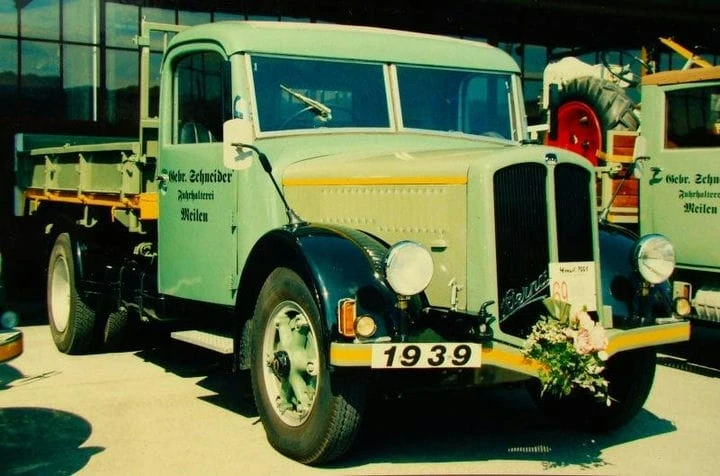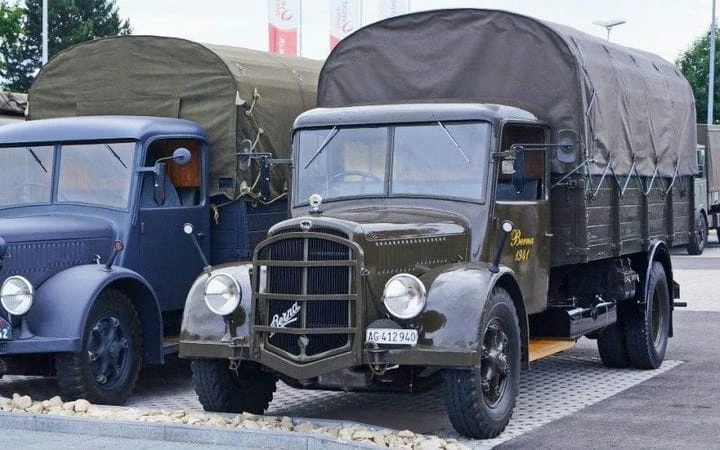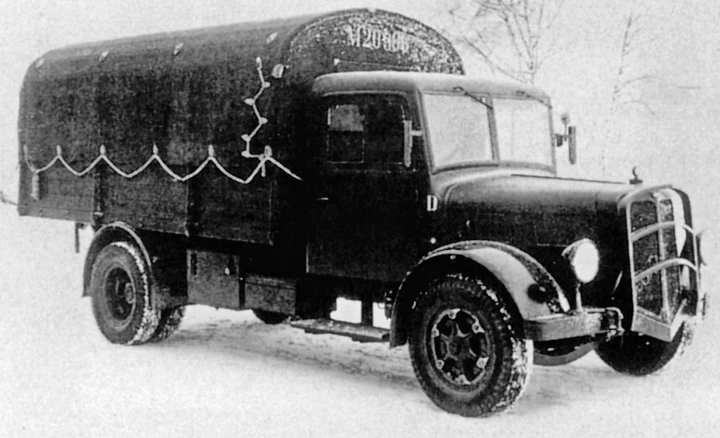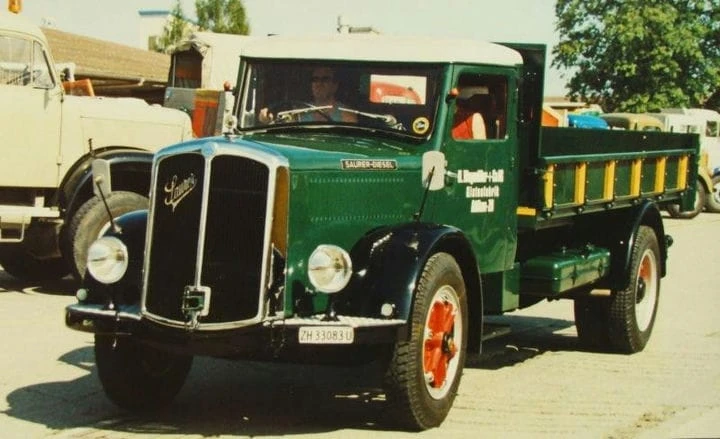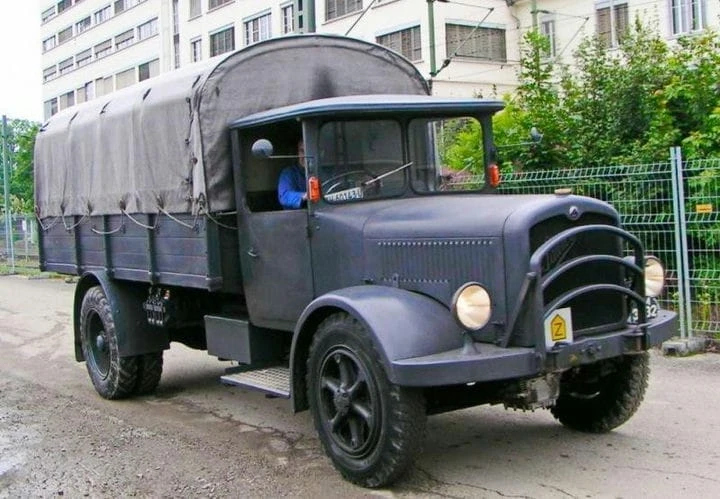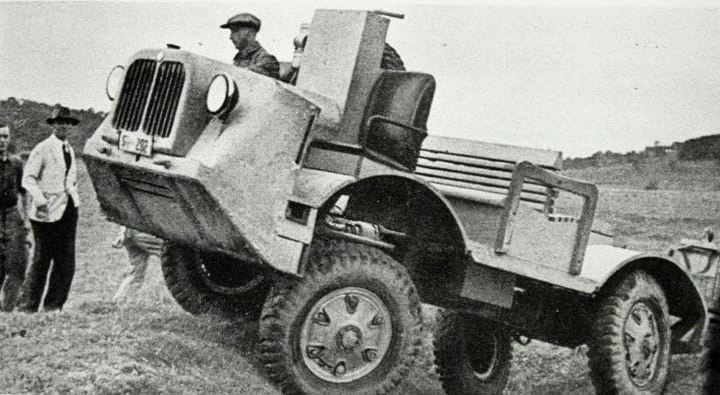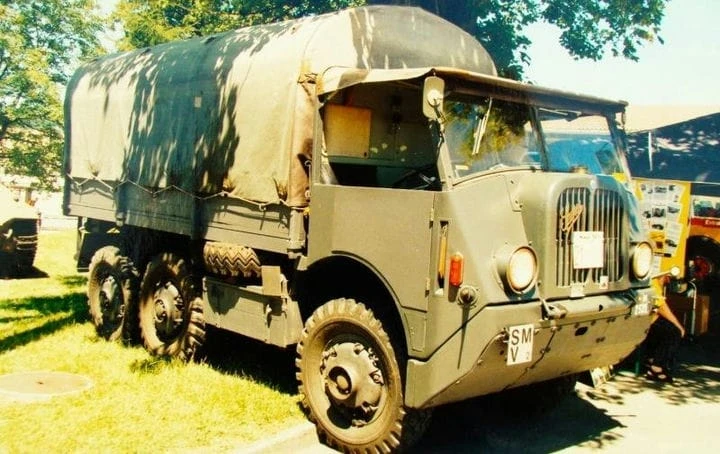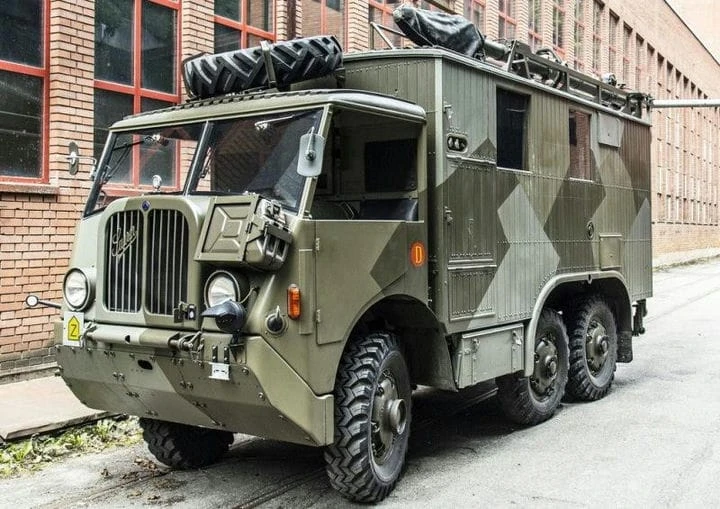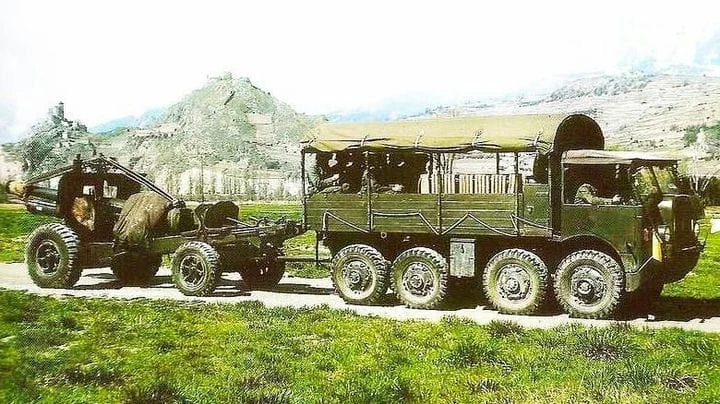Armed Neutrality: Swiss Army Equipment During World War II
The small European country that embarked on the path of “perpetual neutrality” in the early 19th century had three little-known car manufacturers at its disposal during World War II, who assembled small batches of high-quality trucks for the Swiss armed forces. They were all equipped with their own diesel engines, right hand control, large headlights and tools for working in mountainous areas. Traditionally, they were two meters wide and differed from each other in the shape of the radiator grille.
Military vehicles
During World War I, the Bern Automobile Company, founded in 1904, assembled short-wheelbase tractors and forged chrome-molybdenum steel frames. Subsequently, entire families of special diesel vehicles were formed from them, which were used during the Second World War.
The only 55-horsepower Berne 1U military pusher tractor with a short wooden body that has survived to this day. 1941
In the early 1940s, the company produced four standardized series of closed combat vehicles on one chassis with a carrying capacity of 3.5-5.0 tons. The most common of these is an economical 65-horsepower 2U (4×2) version with a hydraulic brake and a four-meter wheelbase. Its external distinguishing feature was a V-shaped bumper with a horizontal protective grille. The assembly of the car continued until 1958.
Multi-purpose diesel truck with a lifting metal body Bern 2U for serving military airports. 1939
The same military version of Berna 2U with longitudinal benches in the box and a high canvas awning. 1940
Army trucks FBW
The rare and incomprehensible abbreviation FBV was assigned to commercial trucks of a small family business in the town of Wetzikon, where mechanic Franz Brozintsevich, a native of Croatia, worked. The production of military vehicles only began in 1935 and made a modest contribution to the military field.
In 1939, FBW teamed up with the solid Bern group, where it began production of a military version of the AM40 (4×2) with its own 63-horsepower powertrain design and simplified, non-assisted hydraulic brake actuation. Outwardly, it was distinguished by two curved radiator crossbars. Until 1950, 235 copies were collected.
Standard 3.5 tonne FBW AM40 diesel truck with distinctive grille and upturned crossbars. 1939
The pinnacle of “cargo creativity” in Switzerland was considered a car on the FBW 60-6R (6 × 4) chassis with a 12-cylinder aircraft engine with a capacity of 365 hp to drive a balloon winch, made by order of the Italian Air Force in six copies. It was equipped with a 90-horsepower petrol engine, a short body and a rounded protective grille.
Heavy special truck FBW 60-6R with a double cab and a body for an aerostatic winch driven by an aircraft engine. 1936
Saurer military products
At the end of the 19th century, the Swiss engineer Adolf Saurer built his first gasoline engine, and in the All-State Military Race of 1912 he had already entered nine different cars with 30-horsepower engines. The second world company met its unified trucks with the same cabs, demonstrating a high technological, technical and quality level.
In 1938-42. The championship of this series was held by three basic variants of 4×2 multi-purpose machines with a carrying capacity of 5.0-7.5 tons, equipped with the same 100-horsepower diesel engine. Their total weight reached 11 tons.
Typical heavy truck Saurer 5C-CT1D, assembled in a small series in quiet Switzerland. 1938
During the Second World War, a “real” military vehicle was never created, and its ancestor was recognized as a five-ton diesel Saurer 5BLD with a capacity of 95-100 forces, which since 1930 entered the country's armed forces in a single composition. Its features were heart-shaped combustion chambers in the piston head, solid or pneumatic tires, and an open paramilitary cockpit with rounded front links.
Later examples received a five-speed transmission, 7.5-ton hardtop bodies that could accommodate 32 soldiers, a winch with a center winch, and new grilles. 1940
Saurer Unique Works
This company would have remained in the circle of its conventional cars for a long time if, in the mid-1930s, design engineer Albert Dubois had not embarked on an independent program to create the most advanced for that time, the first diesel engine in the world family of trucks and tractors of an army trainer with wheel formulas 4×4, 6×6 and 8×8.
The first of these was a five-axle open prototype of an unusual one-sided Saurer off-road chassis with a 10 × 6 wheel formula, created to study future all-wheel drive SUVs.
The location of the wheels on the SUV: two rear drive axles and a front lift axle, a pair of steering wheels with a right steering column and two “spare wheels” on the sides of the frame. 1936
The first prototype of the new series was a 1.75 ton 4M (4×4) tractor with a 50 horsepower engine, full control and an open loading platform. It had a military index M4 and was intended for towing light trailers and guns, but did not go into production. 1938
In 1940, Saurer began production of the most common three-axle truck 6M (M6) weighing 2.5 tons with a base frame and a 2.8-meter base. At various times, it was equipped with a six-cylinder CDD or CTDM diesel engine with a capacity of 70 or 85 hp and a six-ton winch. The curb weight was 6.8 tons, and the total weight was 9.4 tons.
Testing of the first Saurer 6M low-floor military vehicle with a semi-circular lower protective cover. 1940
The cars were mainly produced as a universal sideboard with an awning or as a frame for mounting various vans and superstructures. Until 1948, 365 6M vehicles were in service with the national army.
85-seat serial multi-purpose truck Saurer 6M, produced in the late 1940s
Special chassis 6M with a wooden van for radio equipment
In 1943-45, on the basis of the 6M model, Saurer assembled one of the most unusual and original military trucks – the 8M (M8) artillery tractor weighing 3.5 tons, which became the only serial army truck of the Second World War with an 8 × 8 wheel formula .
The first tests of the all-wheel drive truck 8M. 1943
8M received a 100-horsepower six-cylinder CT1D engine, limited slip differentials, spring suspension and a five-ton winch. The total length was six meters, the length was about six and, by Swiss standards, the width did not exceed the traditional value of two meters. The curb weight increased to 7.4 tons, the total weight – 10.9 tons.
Refurbished Saurer 8M low loader utility truck
The main machines of the 8M family were multi-purpose flatbed trucks with a three-meter tarpaulin for transporting soldiers and weapons. Special tractors were used to tow heavy artillery systems. Only 80 cars were assembled on four-axle axles.
A Saurer 8M heavy military tractor pulling an Oerlikon 155mm howitzer
After the war, automakers in peace-loving Switzerland quickly expanded the production of new military trucks, supplementing them with multi-axle armored personnel carriers, also recognized as one of the best in the world. But this is a completely different story of the Cold War period.”
The article uses authentic black and white illustrations, color photographs were taken by the author.


